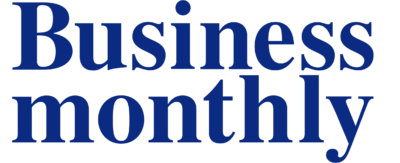Businesses can’t survive, let alone thrive, without their workforces. Accordingly, how managers handle employees is essential to the company’s future. “A company’s employees are its greatest asset, and your people are your product,” said Sir Richard Branson, founder of Virgin Group.
Accordingly, HR professionals need to look out for key drivers of change, such as artificial intelligence (AI). At this year’s AmCham Egypt HR Conference, speakers agreed: The human resource function is at an inflection point.
Nuance imperative
Keynote speaker Skip Bowman, author of the book “Safe To Great: The New Psychology of Leadership,” stressed that HR’s best-practice solutions, introduced in books or taught by international trainers, need to be understood in the context of a company’s specific location.
Diverse social norms and cultures across regions necessitate that concepts be defined differently. “Safety in traffic, safety at work, means something different here in Egypt than it does in Silicon Valley,” he said.
For corporations, almost all HR concepts were developed in advanced Western economies. That means they apply to less than 10% of the world’s population, Bowman noted, and therefore apply to a “fairly narrow … context.”
Speaking up is encouraged in corporate America and Europe, for example, but not in Africa, he said. When male Chinese managers say a woman employee is “very determined,” they mean she is “stubborn, doesn’t listen, and is pushy.” In Western society, being “determined” is almost always a positive trait, regardless of gender.
“In Chinese culture, … you’re embarrassing the other person by being specific when complaining,” said Bowman. That contrasts with Western corporations, where citing examples of grievances is essential to fixing problems. “We have to not look for what they say or what they write,” he said, referring to Arab and Eastern societies. “We have to look at what they’re not saying and to understand from the context and situation what they mean.”
Bowman classified the world’s cultural and societal norms into 10 categories, with the Middle East being one of them. That is a “tool where we could compare cultures, group them in ways to help people explain differences,” he said.
AI environment
Understanding cultural nuances invariably facilitates implementing new solutions, as employees will be more open to adopting them, especially if they are transformative technologies like AI.
.
According to Emad Shawky, chief data and analytics officer at Banque Misr, “AI was the natural consequence” after the proliferation of automation and e-commerce produced “so much data, not only from processes and products, but also customer behaviors and preferences,” noting this helped organizations “predict how [customers] will interact with an offer, how [they] are grouped and clustered and [their] behavior segments.”
Dina Sallam, head of data & AI at Orange Egypt for Telecommunications, warned that while “a lot of organizations today want to be ahead in the AI game, they forget to digitize their HR processes. They will gain some efficiency with [implementing AI], but they will never reach true intelligence.”
She said the key to AI integration is machine learning, which relies on “proprietary data, such as employment details and performance history.” Such information can help AI “predict the next best internal move for an employee, for example. Also, it can predict which employee will disengage and eventually leave,” Sallam said. “Imagine having an engine that predicts your upcoming attrition rates and [who] will come out on top, … and create personalized development plans, personalized training plans, and so on.”
Ultimately, HR professionals can use AI to create “a digital twin for the office, where you can simulate restructures or cost-cutting plans and see their effect before implementing them,” Sallam said.
AI in action
At the conference, several companies showcased how their HR functions have evolved after utilizing AI and other cutting-edge technologies to create seamless experiences and access to company services for their employees.
Rehab Fayez, head of people experiences and technology at Amazon MENA, highlighted the company’s range of AI-powered internal HR apps. Ask Clarity Assist navigates the company’s HR systems, generating headcount reports, attrition dashboards, and organizational design workflows.
She also talked about AZA (A to Z Assistant), an employee-facing AI program for handling work-related inquiries; Power Chat for internal communication; Amazon Q, which supports cloud operations; QuickSight, for dashboards and visualizations; Cedric, which creates personas for various functions in Amazon; PXT Persona, which guides HR strategy; and MENA ER Persona, which manages employee relations, legal compliance, and disciplinary guidance.
Amr Salem, Chief HR Officer at International Company for Agro Industrial Projects (Beyti), highlighted the company’s mobile HR app, which enables employees to request vacations, access payslips, and generate HR letters. It also features performance tracking with daily feedback.
The app features an internal news feed, where commenting and sharing earn points users can redeem for prizes, and HR professionals use in recognition programs such as Employee of the Month. Sallam said the app has more than 6,000 users with a 60% engagement rate, generating 23,000 likes, shares, and comments on the company’s 7,000 posts since the start of 2025.
Karim Maher, Head of Employee Engagement, Internal Communications, and Digital Transformation at Vodafone Egypt, discussed the company’s “Happiness Initiative” and the Vodafone Super App. The former was a suggestion by employees that small gestures, such as frequent and personalized experiences, including recognizing employee birthdays or celebrating International Women’s Day, would make the workforce happier. Company gestures might include sending cheese or fruit platters to frontline employees or facilitating gym and bus access.
Maher said the Vodafone Super App started in 2012 as a service app. It has since expanded to include access to various HR services, internal communication, and interaction. It also features an e-commerce platform for Vodafone products, allowing employees to order them online and have installment payments deducted automatically from their salaries.
Stress points
Despite the apparent benefits of AI, Bowman highlighted several points HR professionals need to be aware of. First, they need to distinguish between automation, machine learning, and AI. “They’re absolutely not the same thing,” he said. “Quite a lot of what we’re seeing in HR is really automation, not AI.”
The second issue Bowman highlighted was AI hallucinations, where the system responds with blatantly wrong replies. “I was looking for a fish recipe, and [the AI] gave me lamb,” he said. The problem is that while some mistakes can be easily detected and funny, others are much harder to spot.
Thirdly, AI has no self-doubt, and therefore “it’ll say really dumb things as confidently as accurate things.” Bowman said “dumbness” results from “using limited data sets and [the need for a] different kind of machine learning to make sure [results are] safe.”
Fourth, HR professionals need to be aware that using AI in HR functions “tends to amplify organizational culture leadership,” said Bowman. “If you have an unhealthy culture where … leaders and employees are not happy with each other, when we apply [AI] on top of it, it will just … make it worse.”
Lastly, the importance of the human element in HR functions increases as more AI is used. Bowman said, “94% of HR activities [can be] automated, but [the remaining] 6% [require humans]. That might be a low percentage, but [they] have the most significant impact on employee engagement.”
Next-gen HR professionals
According to Bowman, students need to be taught differently from past generations to capitalize on AI’s capabilities. Instead of the traditional classroom setup, teachers should put “students in groups and give them AI and get them to work together using [the technology] to learn together,” explained Bowman. “Collaborative learning is essential to the way that we train and develop for AI.”
Corporations should apply similar approaches to “help younger people, new talents, and older members of our workplaces understand how to use AI to think better about what they’re doing because AI has enormous capabilities in this area,” he said.
Such training should focus on teaching workers when to use AI, the importance of ensuring outcome accuracy, innovating with AI, and AI ethics.
For Ahmed El-Bossati, Country HR Director at Capgemini Egypt, a consultancy, building a successful career requires solid “hybrid language” knowledge about business, technology, and digitalization, he said during the AmCham conference. He noted the emergence of new professions, such as AI system architects, analysts, and AI ethics supervisors. Meanwhile, “traditional roles won’t vanish, but they will change.”
Accordingly, “HR leaders need to work on strategic workforce planning to match the current talent pool with the required and aspired skillsets for future jobs,” said El-Bossati. “Another thing would be change management [to] ensure talents can digest … methodologies and terminologies and be able to build this capability in-house.” That knowledge would enable employees to answer critical questions: “What kind of relationship do we want to have to this technology? What is it doing to us?” said Bowman. “We’re in the digital dark age … in the sense we have a technology that is fundamentally shaping our lives and we have absolutely no idea how it works … It’s a qualitative shift and therefore we have to develop our minds to understand how to use it for the good.”
Ultimately, building an AI-ready workforce will take time, so HR professionals must initiate the process promptly. “We will not change the workforce in one day,” El-Bossati said. “At the same time, reskilling [is critical] because you cannot go into the future with the current set of skills that are embedded in our talent pool.”




